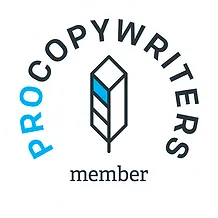But I’m also learning from the traps that others fall into. Those common pitfalls that sit just after the starting line. They’re things that are hard to see, but easy to avoid.
So, in the spirit of stopping you from doing the same stupid shit I do, here are the five most common issues I see. Formatted into a nice list post because who has the time to read paragraphs?
#1 Sentences too long
Nobody wants to need a stamina potion to hit the end of the sentence.
In part, that’s about sentence length, but it’s also about clauses and structures. In many cases, I can just go on for ages, writing like this, because I’m adding infinite clauses – and other bits of punctuation – that give the impression of a short sentence when you’re writing it, but actually come off long (and bits in parentheses are the worst offender).
The first thing I do when reviewing existing copy is make the sentences shorter. If there’s a comma, that means take a breath. And if I need a breath, it better be well earned with essential information – not flakey attempts to add flavour.
#2 Metaphorical madness
You’re not the first copywriter to have a secret desire to write fiction. I know. I’m with you.
But the two disciplines are very different. And where similes and metaphors can be great, they’re also a common way to undermine the actual job.
When you’re writing copy, you’re here to make something clear and vivid. So tools like similes really need to add value in a big way.
Telling me something’s as simple as 1,2,3 is telling me it’s as simple as a very simple thing.
Where’s the extra power or value?
Wherever there’s metaphorical language, check that it’s revealing some new detail or a vital way to bring ideas to life. If not, drop it. It’s more impressive to you than it is a reader.
#3 Starting boring
We’re all taught the beginning, middle, end. We all know to set up the normality, then call it into question, then reclaim that equilibrium near the end.
But that’s not good advice for copywriting. Like, at all.
In most traditional story structures, we need to establish the context. But that’s the most tedious part of copywriting, whether you’re using a storytelling motif or not.
What’s more effective is taking a less linear approach. Hit the reader with something punchy to get their attention – normally by promising some value. Or opening up an unanswered question to get curious about.
It’s stuff like ‘I didn’t know my life was about to change’ or ‘Our customers never call us professional.’ Something to catch people off guard and kickstart the read with momentum.
That momentum means you can comfortably pull back and start doing the setup in your second paragraph. You can slow down when you need to. But you have to start hard.
#4 Mistaking events for benefits
Being benefit-driven is basically the first thing anyone learns about being a copywriter. You take the feature (an innovative super-smooth tip on a pen), then translate it into a benefit (silky smooth writing).
But the real question isn’t ‘Why does this matter?’. It’s not ‘What do I get?’. It’s ‘Why should I care?’.
What we’re trying to do with copy is get people interested in things that, well, aren’t very interesting most of the time. And what we’re all comfortable caring about is ourselves.
A lot of newer copywriters fall into the trap of writing benefits that are generic. They stop short of emotive.
For me, there’s a line that you can plot benefits along. They start generic (smooth writing). Then they get increasingly primal as you move along.
Maybe it’s:
- Smooth writing
- Faster work
- More money
- A comfortable lifestyle
- Better relationships
- Won’t die alone with just your second-rate pen to keep you company
Now, we don’t always want to hit benefits at their most primal. That would be hugely compelling in theory, but undermines your authenticity. Instead, it’s about finding the point along that line where the audience is most likely to respond. And that comes down to the most important thing of all.
#5 Talking down to your audience
Sharing information is a delicate business. By definition, the power balance is off: you (the writer) know more than the readers. And you’re going to illuminate them.
But that means it’s all too easy to start speaking to your readers as if they’re absolute morons. People who couldn’t figure out for themselves that if they want to drive somewhere, they probably need to buy a car.
By far the biggest offender here is an all-time classic: telling people what they already know.
In a logical, even compassionate attempt to relate to the audience, a lot of copy starts by recapping problems they already know about.
‘Securing your IT infrastructure is critical. If not, your business could be threatened by cyber criminals.’
Sure, but the vast majority of IT security decision makers already know the scale of the problem. The fact you know it isn’t worth showing off about. That’s to be expected.
For me, the most effective way to remedy this is to just use the language people use between themselves. Get on some forums. Look at how IT security people speak to each other — not necessarily just when they’re talking about security.
Mirroring their language is how you build rapport, not parroting back the stuff they already think about every day.
